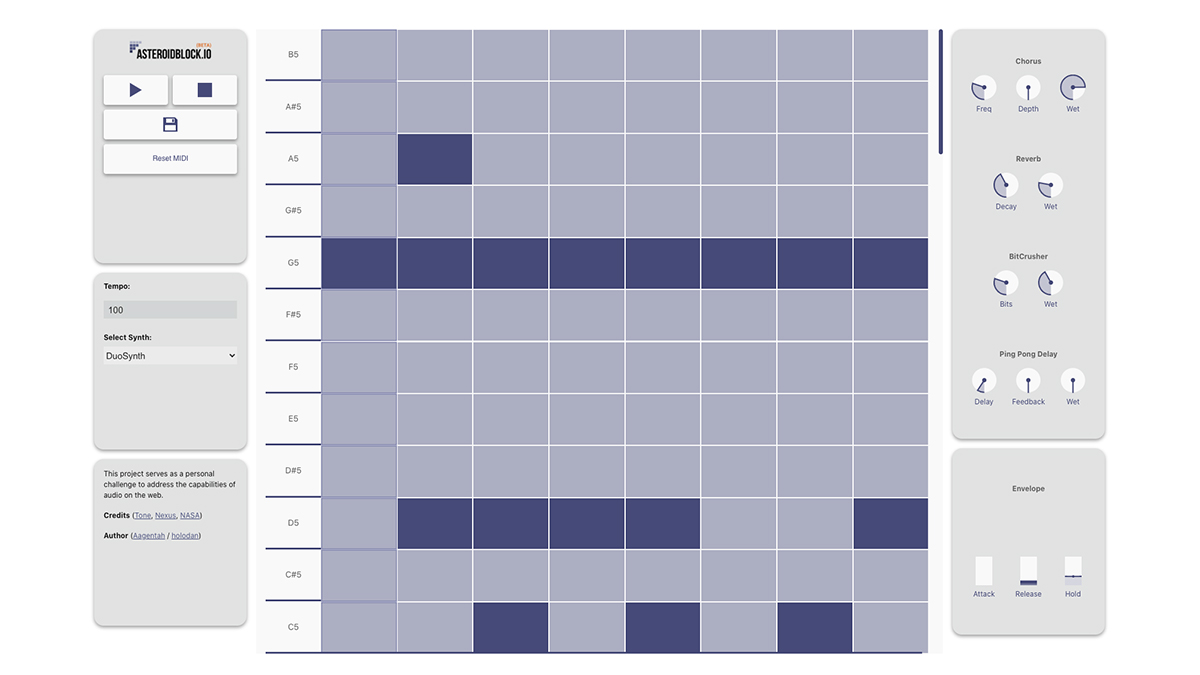Do look up and check out this free online synth that’s powered by NASA’s live asteroid proximity data
Set yourself on a collision course with asteroidblock.io

Your current synth plugin might have a randomise feature, but can it use NASA’s live asteroid proximity data to generate its initial parameters? Thought not.
Fear not, though, because asteroidblock.io - a new, free, web-based pad synthesizer that’s written in javascript - can do exactly that. It’s the brainchild of a producer who goes by the name of Aagentah, and is currently in beta.
To start using the synth, you first need to select a real-world asteroid from the drop-down list. You can discover some interesting facts about your chosen rock - such as whether it’s potentially dangerous, how big it is, how fast it’s travelling and by how much it’s predicted to miss us - and then use its proximity data (drawn from NASA’s API) to form the basis of your sound.
You’re then presented with a large piano roll style interface that enables you to input notes and create patterns, an ARH envelope and four tweakable effects (Chorus, Reverb, BitCrusher and Ping Pong Delay).
You can also choose from four synth types - AM, FM, Duo, Metal, Membrane - set the tempo and export patterns as WAV files once you’re happy with them.
We’ve had a quick play and can confirm that you can create some suitably galactic soundscapes with asteroidblock.io, so go and give it a try.
Oh, and if the data does suggest that an asteroid is about to hit the Earth, do us a favour and let us know, yeah?
Want all the hottest music and gear news, reviews, deals, features and more, direct to your inbox? Sign up here.



I’m the Deputy Editor of MusicRadar, having worked on the site since its launch in 2007. I previously spent eight years working on our sister magazine, Computer Music. I’ve been playing the piano, gigging in bands and failing to finish tracks at home for more than 30 years, 24 of which I’ve also spent writing about music and the ever-changing technology used to make it.